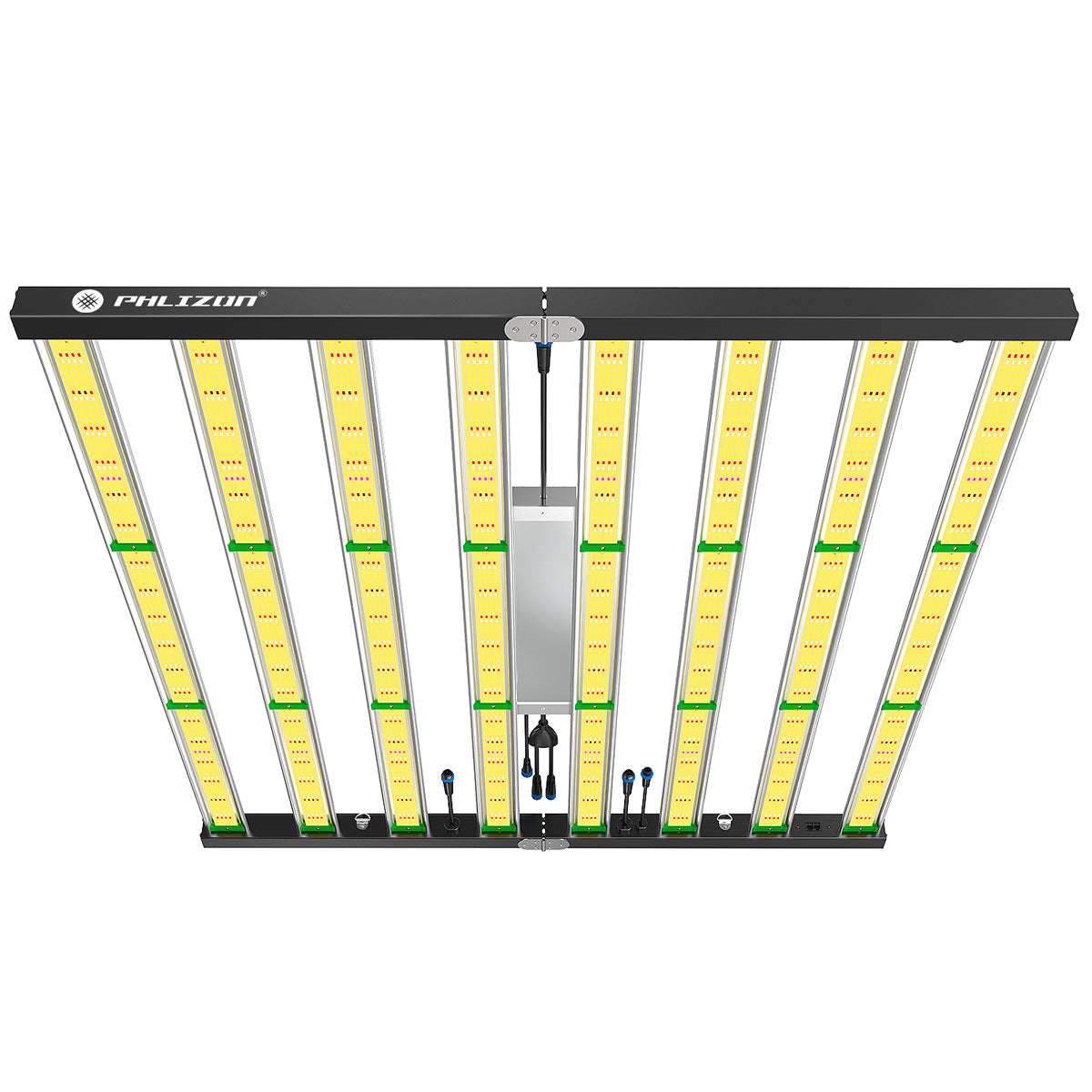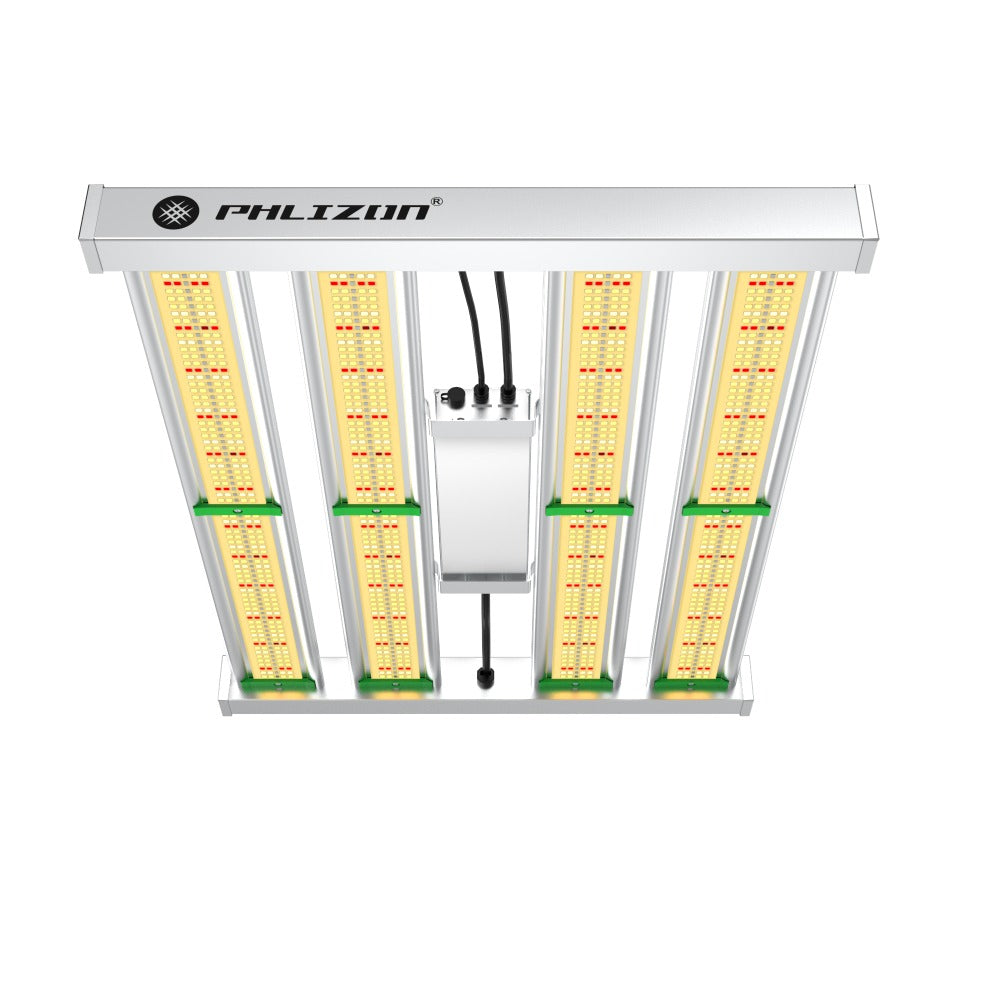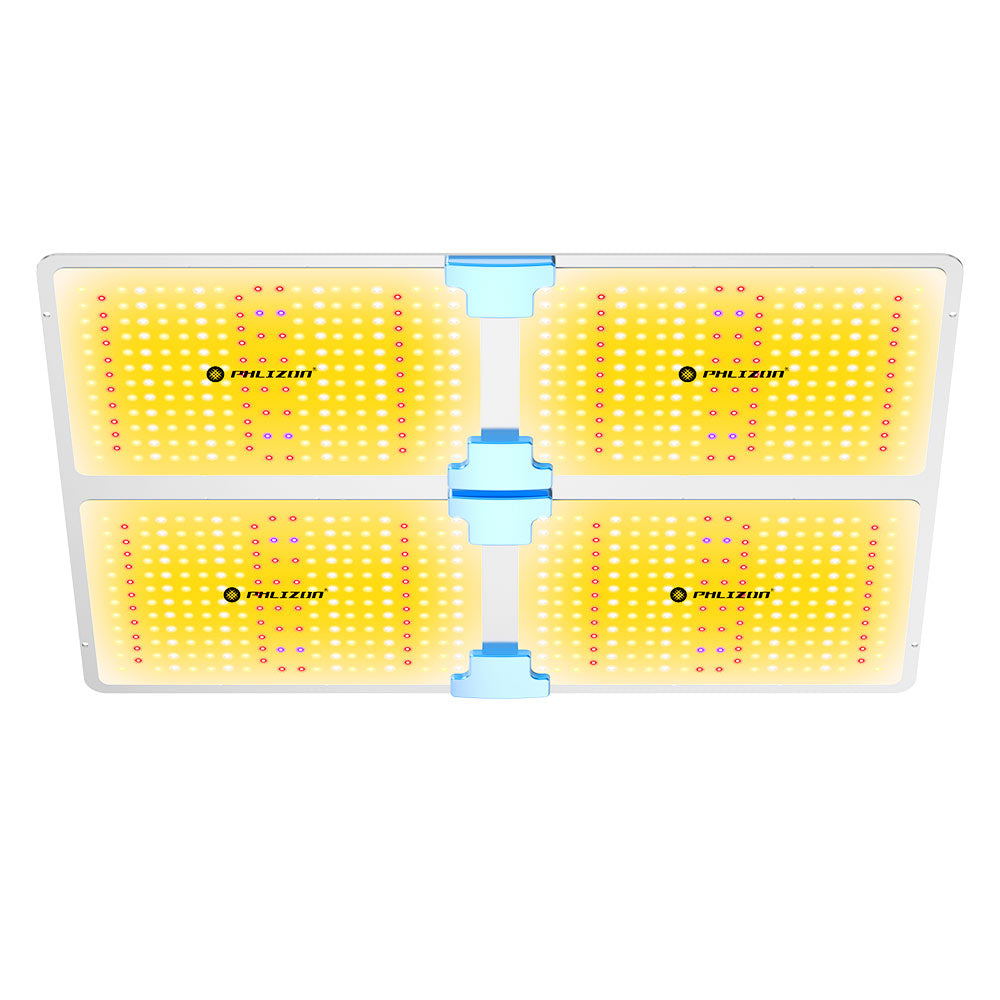Menu
Do Different Types of Artificial Light Affect Plant Growth?
Light is one of the most critical factors influencing plant growth, driving photosynthesis and regulating developmental processes like flowering and stem elongation. While sunlight provides the ideal spectrum and intensity for plants, artificial lighting has become essential for indoor gardening, greenhouses, and controlled environments. But do different types of artificial light affect plant growth?
The Role of Light in Plant Growth
Light directly influences plant growth and flowering by inducing photosynthesis and feeding plants energy. Plants are dependent on light to generate food, induce the growing cycle, and allow for healthy development. Without light, natural or artificial, most plants would not be able to grow or reproduce, photosynthesis would not occur without the energy absorbed from sunlight, and there would not be enough oxygen to support life.
Photosynthesis is the process of converting carbon dioxide into organic compounds using energy from sunlight or artificial light. The green pigment chlorophyll, which is present in most plant life, absorbs light. Natural daylight from the blue part of the spectrum is optimum for the initial stage of plant growth. Artificial light will work almost as well—fluorescent, incandescent, LED, or high-intensity discharge lamps (like metal halide or high-pressure sodium). The flowering stage of plant growth requires light from the red and orange part of the spectrum.
Plants use light as a source of both energy and information. Plant physiological responses to light, and interactions between plants and animals (such as herbivory and pollination), have evolved under natural daylight conditions. The relationship between light and plant growth can be demonstrated by exposing leaves to various colors of light. Light supplies the power to carry on photosynthesis, the food-making process in leaves. But the spectrum of light most utilized by a leaf is limited to three distinct colors: red, blue, and yellow. For example, leaves appear green because green is the color most leaves reflect rather than absorb and use.
Types of Artificial Light and Their Effects
Incandescent Lights
Incandescent bulbs emit a very warm light that is rich in red wavelengths. Though great for promoting flowering, incandescent bulbs lack the blue light that plants need for healthy leaves. When it comes to the light they emit, incandescent bulbs are the opposite of fluorescents. Domestic light bulbs are unsuitable for growing plants as the light intensity is not enough, and they are less energy-efficient. Incandescent lamps tend to get very hot and can burn the leaves if placed too close, making them less practical for most indoor plant setups.
Fluorescent Lights
Fluorescent lights are a popular and economical choice for houseplants. They come in two main forms: tubes, which are ideal for larger plant setups or growing shelves, and compact fluorescent bulbs (CFLs), which screw into regular lamp sockets, making them versatile for various fixtures. Fluorescent bulbs last about 10,000 hours and run cool, so they need only sit about one foot away from your plants.
Although these bulbs emit lots of the blue light wavelength that plants need, they tend to lack the equally important red hues. To counter this, buy the whitest fluorescent bulb because white light encompasses all the colors of the spectrum. If you can’t find a fluorescent bulb with enough warm light, supplement your lighting with at least one traditional incandescent bulb.
Fluorescent lights are known to emit cooler light at the blue end of the spectrum. So they may not be able to provide complete light that your plants need. If you are growing herbs, these are quite effective. You will find fluorescent lights more often in small home-based grow systems. Many growers tend to mix them with other red-spectrum lights when growing fruit or flowering plants.
LED Lights
Among the artificial light varieties, LEDs (short for Light Emitting Diodes) are the best. They are the most efficient at emitting light in the red and blue part of the spectrum and have a higher intensity than fluorescent lights. Even more importantly, they are also more energy-efficient.
LED aquarium lights are a great option for potted plants since they provide a steady, balanced light source. They are energy-efficient and do not generate a lot of heat, which can be beneficial for plants that prefer cooler environments. LED aquarium lights come in different colors and intensities, allowing you to customize the lighting for optimal growth of your plants, even though they don’t provide the green color spectrum needed for active photosynthesis.
The use of light-emitting diode (LED) technology for plant cultivation under controlled environmental conditions can result in significant reductions in energy consumption. Elevated light intensities made possible with LEDs increased photosynthetic activity, the number of tillers, biomass, and yield.
The efficiency of red (650–665 nm) LEDs on plant growth is easy to understand because these wavelengths perfectly fit with the absorption peak of chlorophylls and phytochrome, while the supplemented blue light introduced the idea that growth under natural light could be mimicked using blue and red LEDs.
In addition to providing a better excitation of the different types of photoreceptors, the blue + red combination allowed a higher photosynthetic activity than that under either monochromatic light. Some authors attributed this effect to a higher nitrogen content of the blue-light-supplemented plants, whereas others suggested a better stomatal opening, thus providing more CO2 for photosynthesis. It is well established that stomata opening is controlled by blue-light photoreceptors.
Research on lettuce showed that when grown under red LED light, the stem of the lettuce was more elongated than when it was grown in white light. The growth of the stem is a light-dependent process. The researchers also found that adding some blue light prevented the stem from elongating too much. Chlorophyll is the main molecule that plants use to capture the energy of photons, and its accumulation in a cell is dependent on light. Research found that chlorophyll accumulates slowly under white LED light and red LED light, but not under blue LED light, where the production of chlorophyll was not affected.
Full-Spectrum Grow Lights
Sunlight contains a full spectrum of colors, while most artificial lights typically emit only yellow or green light. However, modern full-spectrum grow lights are designed to mimic sunlight’s spectrum. These specialized lights are designed to closely mimic the wavelengths found in natural sunlight, offering a well-rounded spectrum that supports various stages of plant growth.
There are even some wavelengths of sunlight that plants can’t intake, enabling grow lights to customize a light spectrum designed for the plants growing under them. Plants can grow using only artificial grow lights, given that the light spectrum adequately meets their requirements. Full-spectrum grow lights, with their ability to provide the necessary red and blue wavelengths, can sustain plant growth and development.
An artificial full-spectrum light bulb gives plants all of the light that they would have outdoors, so they can use it like they would use the sunlight. Sometimes a bulb can be better than sunlight, since much of the sunlight a plant gets inside the house is indirect light that is not very intense. Plants prefer full-spectrum artificial light or sunlight. They grow best when the light is above the plant.
Specific Effects of Light Spectra
Blue Light
Blue light is essential for foliage growth. It promotes the development of strong, healthy leaves and stems. This type of light is particularly important during the vegetative stage of a plant’s growth cycle. Blue is responsible for the growth that occurs at germination and after flowering. If a plant receives only this type of light, it stays low, and its color becomes darker. The supplementation of blue + red LEDs could also be complemented with green LEDs. It is well established that stomata opening is controlled by blue-light photoreceptors. This is possibly reflected in the increase of shoot dry matter with increasing levels of blue light.
Red Light
Red light influences the elongation of the plant’s stem and determines its flowering, as it indicates the length of the plants’ days. Too much red will result in a very tall plant with more space between its leaves. If blue and red are combined, the flowering of the plant is stimulated. Red light promotes flowering and fruiting, making it critical for plants in their reproductive stages. The efficiency of red (650–665 nm) LEDs on plant growth is easy to understand because these wavelengths perfectly fit with the absorption peak of chlorophylls and phytochrome.
Green Light
Interestingly, plants have little use for green wavelengths. They reflect most green light, which is why leaves appear green to the human eye. This reflection is part of the plant’s natural light management system. Despite this, green light penetrates deeper into the leaf than other wavelengths, potentially influencing plant structure and contributing to some growth processes.
Practical Considerations for Using Artificial Light
Proper positioning of artificial lights makes sure that your plants receive enough light. The distance between the light source and the plant can significantly impact growth and health. As a general rule, position fluorescent and LED lights about 6–12 inches away from plant foliage.
For taller plants, use multiple light sources at different heights for even coverage. Minimizing shadows and providing full-spectrum exposure helps plants develop evenly. Most houseplants benefit from 14–16 hours of artificial light per day. A timer can help maintain a consistent light schedule, which is important for plant health and growth cycles. Simulate a natural day and night cycle for your plants to prevent stress and maintain healthy photosynthetic activity.
You have to be careful with the intensity of the artificial light, which is determined by the power of the bulb and how close it is to the plant. Be very careful about the type of lamp or bulb you are using and how close it is, because incandescent lamps tend to get very hot and can burn the leaves. For this reason, it is advisable to purchase fluorescent or LED lamps.
The intensity requirements will be given by the species of the plant. Houseplants from tropical forests don’t require a lot of light, unlike those that come from dry places, such as cacti. As a general reference: if your plant has flowers (such as violets, begonias, and others), you can put it about 20 to 30 cm away from the lamp. If it is a foliage plant, such as an ivy or a philodendron, they can be 90 cm from the growth lamp.
Challenges and Limitations
Photosynthetic processes are often modified in plants grown under artificial lighting, because lamps do not usually mimic the spectrum and energy of sunlight. Plants can grow in artificial light, but artificial light isn’t as intense as sunlight and has less red and blue light than sunlight.
LED lights used in special indoor growth chambers reduce the difference between artificial light and sunlight, which can help plants grow better. The outcome shows a direct transfer of knowledge obtained in controlled environments to greenhouses to be difficult, as the natural light will reduce the effects of specific spectra with species or cultivar-specific differences.
Artificial lighting affects more than just plant physiology. For instance, artificial lighting was enough to change the entire composition of grassland communities. Some plants responded well to artificial lights, producing more biomass and vegetative offshoots to the point that they pushed out other species. This was compounded by the change in reproductive output, with certain species showing higher seed production than others. Changes in plant physiology, phenology, and composition also affect myriad other organisms in the environment.
View our products:
- https://www.phlizonstore.com/collections/all-products
- https://www.phlizonstore.com/collections/upgraded-grow-bar-lights
- https://www.phlizonstore.com/collections/shop-by-collection
- https://www.phlizonstore.com/collections/qb-grow-lights
- https://www.phlizonstore.com/collections/grow-light-with-uv-ir-led
FAQs
Can plants grow with only artificial light?
Yes, plants can grow using only artificial grow lights, provided the light spectrum adequately meets their requirements. Full-spectrum grow lights, which provide the necessary red and blue wavelengths, can sustain plant growth and development.
What is the best type of artificial light for plant growth?
LED lights are considered the best for plant growth. They are energy-efficient, emit high-intensity light in the red and blue spectrum, and produce minimal heat, making them suitable for a wide range of plants.
How long should artificial lights be on for plants?
Most houseplants benefit from 14–16 hours of artificial light per day. Using a timer to simulate a natural day and night cycle helps maintain healthy photosynthetic activity and prevents stress.
Does the color of light affect plant growth?
Yes, different colors of light have specific effects. Blue light promotes leaf and stem growth, red light encourages flowering and fruiting, and green light, while less utilized, can influence plant structure.
Can incandescent bulbs be used for plant growth?
Incandescent bulbs are not ideal for plant growth due to their low intensity, high heat output, and lack of blue light. They can be used to supplement fluorescent lights for red light but are less efficient overall.
Conclusion
Different types of artificial light significantly affect plant growth, with each light source offering unique advantages and limitations. Incandescent lights provide red wavelengths for flowering but lack blue light and produce excessive heat. Fluorescent lights are economical and effective for foliage growth but may need supplementation for flowering plants.
Featured blog
- Choosing a selection results in a full page refresh.

















